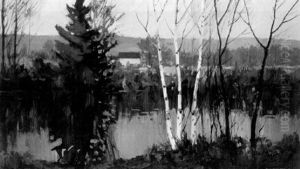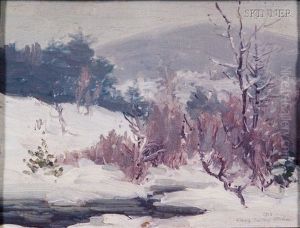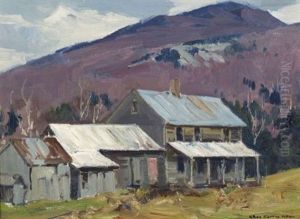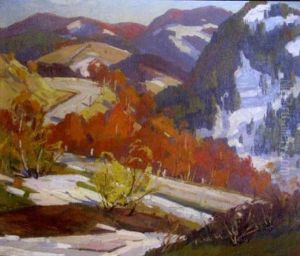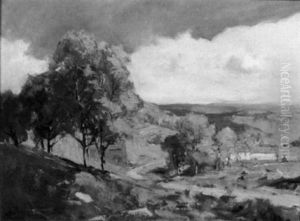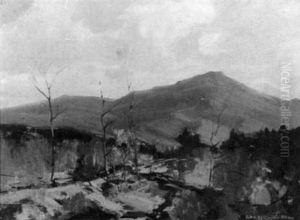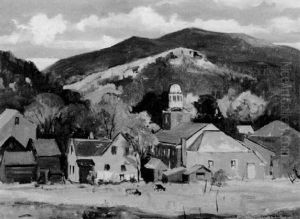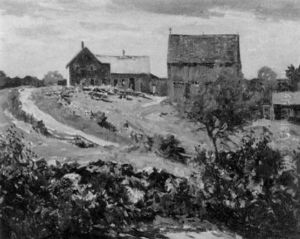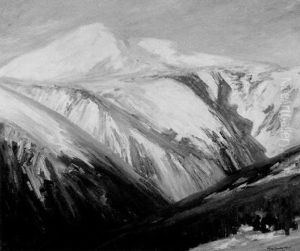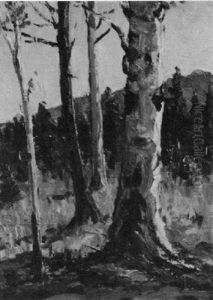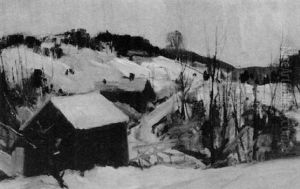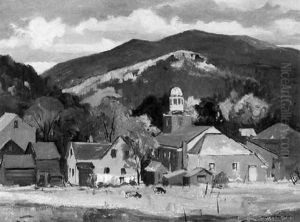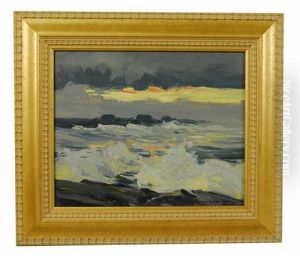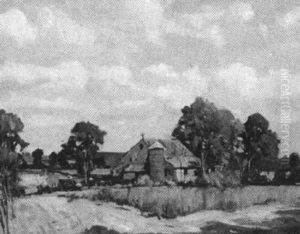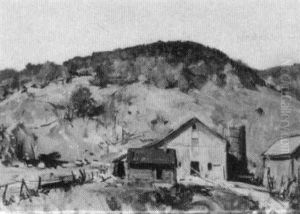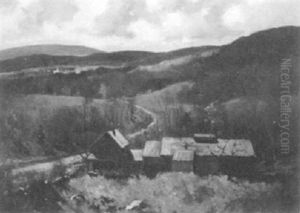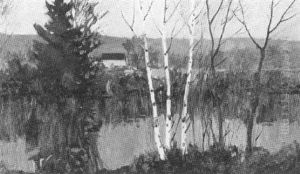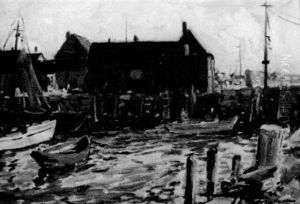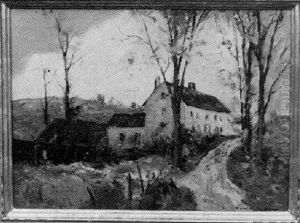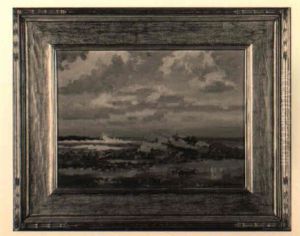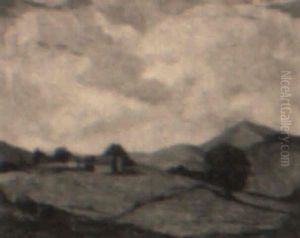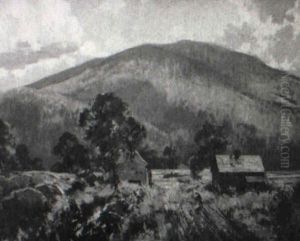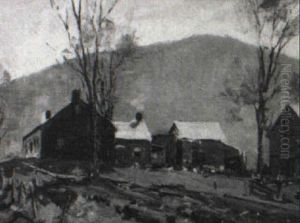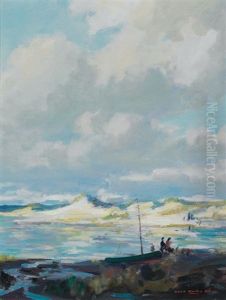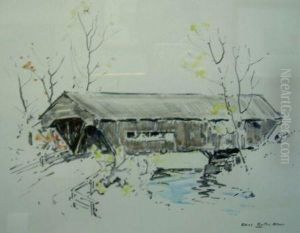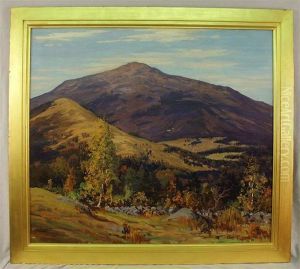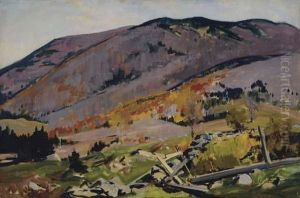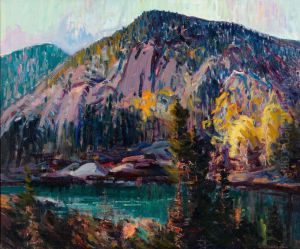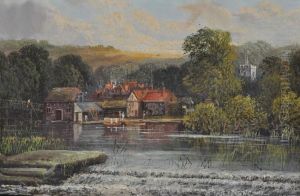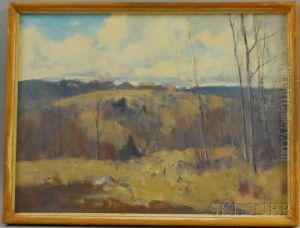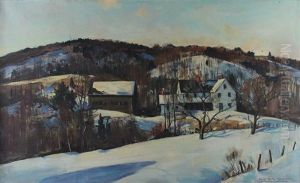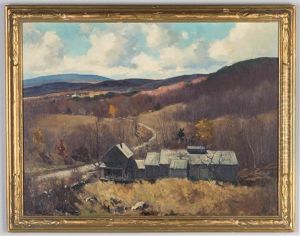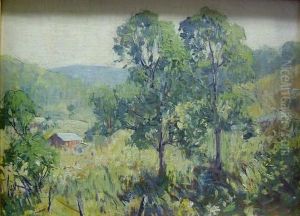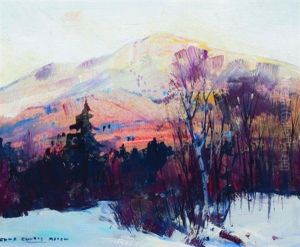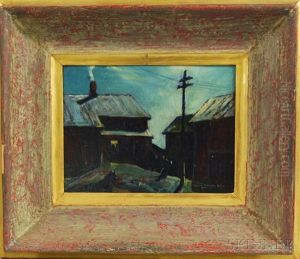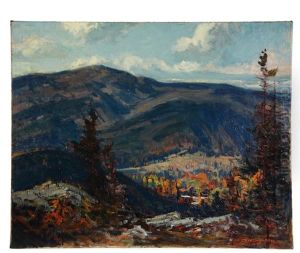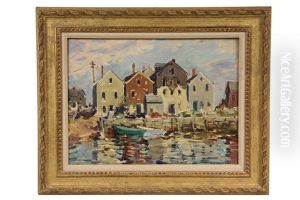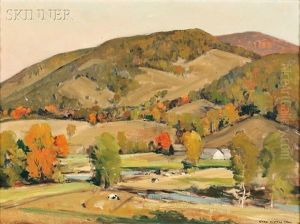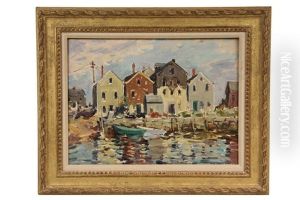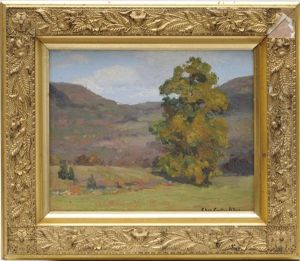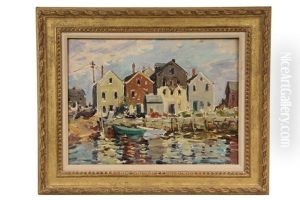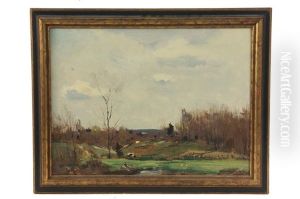Charles Curtis Allen Paintings
Charles Curtis Allen was an American painter known for his landscape art, particularly scenes of New England. Born in Massachusetts in 1886, Allen's artistic journey began at a relatively young age, nurtured by the rich cultural and natural environment of his home state. He pursued formal art education at the Massachusetts Normal Art School in Boston and later at the Eric Pape School of Art. His early career was marked by a traditional approach to painting, heavily influenced by the American Impressionist movement, which was prominent during his formative years.
Allen's work is characterized by its vibrant use of color and light, capturing the changing seasons and diverse landscapes of New England with a particular fondness for rural and coastal scenes. His paintings often depicted serene countryside views, snowy villages, and the rugged coastlines of Maine and Massachusetts, rendered with a blend of realism and impressionistic flair.
Throughout his career, Allen was an active participant in the art community, contributing to various exhibitions and art organizations. He was a member of the Boston Art Club, the Connecticut Academy of Fine Arts, and the North Shore Art Association, among others. His art found a warm reception among critics and collectors alike, securing his reputation as a notable figure in American landscape painting.
Despite the recognition he received during his lifetime, Charles Curtis Allen's work has been somewhat overshadowed by his contemporaries in the broader narrative of American art history. Nevertheless, his contributions to the landscape genre continue to be appreciated by art historians and collectors who value the unique perspective and technical skill evident in his work. Allen passed away in 1950, leaving behind a legacy of art that continues to captivate and inspire appreciation for the natural beauty of New England.
